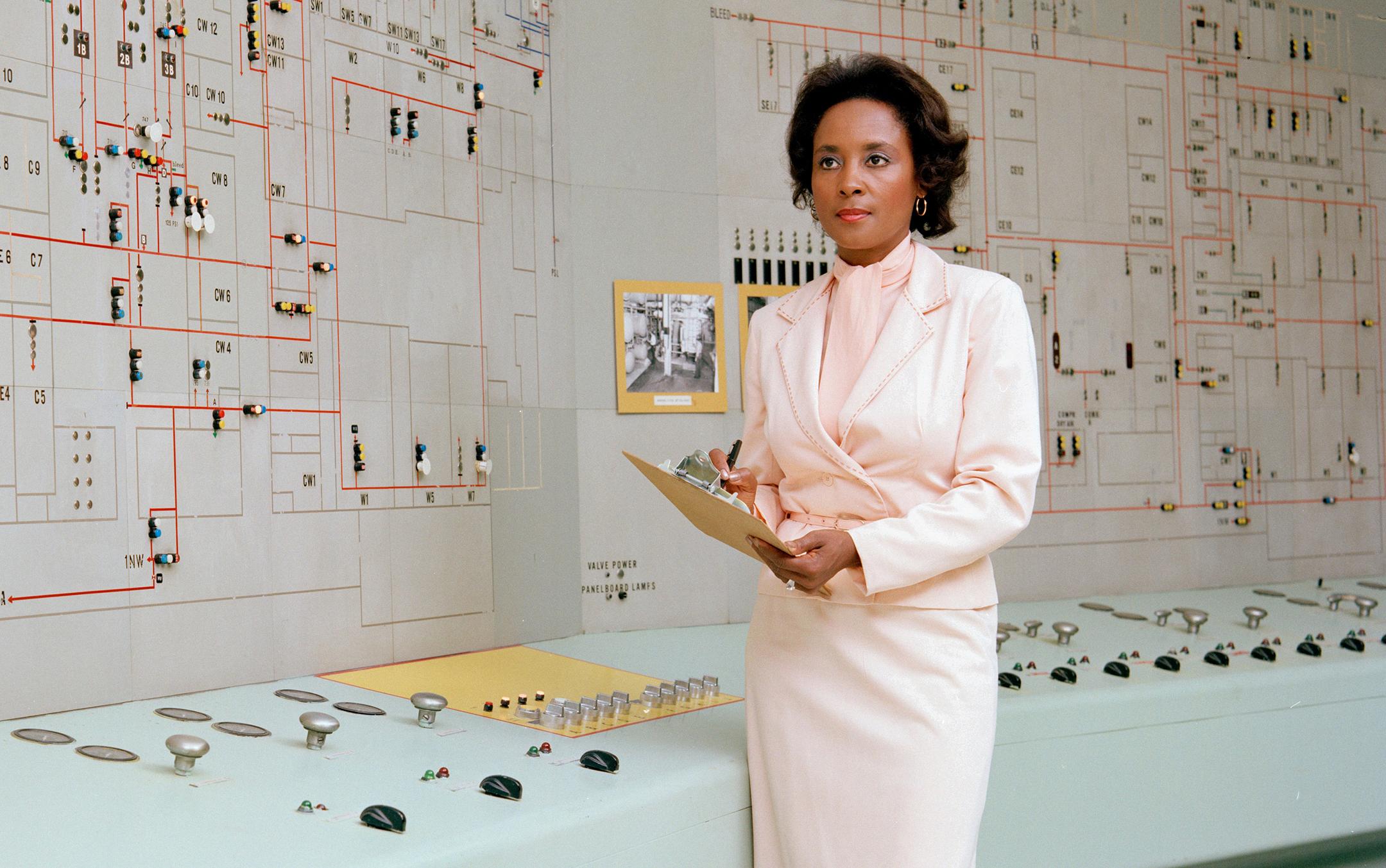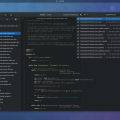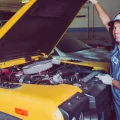Today, we’re recognizing the incredible achievements of Annie Easley, an African-American mathematician, computer scientist and rocket scientist who worked at the National Aeronautics and Space Administration (NASA).
Annie Easley was born in 1933 in Birmingham, Alabama. After high school, she attended Fisk University to pursue a career in pharmacy. Despite her best efforts, she was unable to complete her degree due to financial constraints. This setback didn’t stop her from reaching for her dreams.
In 1955, Annie read an article about twin sisters who worked as “human computers” at the Aircraft Engine Research Laboratory in Cleveland. She applied for a job there and was accepted. During her time there, Annie developed and implemented code used to research energy-conversion systems and analyze alternative power technology – including the battery technology that was used for early hybrid vehicles and the Centaur upper-stage rocket.
In 1974, Annie transferred to NASA Lewis Research Center (now known as John H. Glenn Research Center) where she becae a computer scientist with expertise in system software and analysis of alternative power sources such as fuel cells and batteries for electric vehicles. She also contributed to projects like the development of compressed natural gas engines for vehicle propulsion systems.
Annie’s work helped pave the way for advances in alternative power sources that are still being used today. Her contributions were so important that even after retiring from NASA in 1989 she remained an active participant in organizations such as the Speaker’s Bureau and Business & Professional Women’s association.
Today we remember Annie Easley for her inspiring story of determination and resilience that made a lasting impact on our world.
The Notable Achievements of Annie Easley
Annie Easley is most famous for her groundbreaking work as a computer scientist and mathematician at the NASA Lewis Research Center, now the Glenn Research Center, in Cleveland, Ohio. She was one of the firt African-American women to work as a scientist in a major government research lab. During her 34 years of service at NASA, Easley made significant contributions to research and development in energy conversion systems, battery technology, and rocket propulsion. She developed code for researching alternative power technologies, including the battery technology used for early hybrid vehicles and the Centaur upper-stage rocket. Her legacy continues to have an impact on space exploration today.

Source: elective.collegeboard.org
Annie Easley’s Start at NASA
Annie Easley began her career at NASA after she read an article in 1955 about twin sisters who worked as “human computers” at the Aircraft Engine Research Laboratory in Cleveland. The laboratory was eventually absorbed into NASA when the agency was founded. Easley applied for and received a job as a computer for the Lewis Research Center, now known as the Glenn Research Center. As a human computer, she worked on various projects related to aerospace propulsion and oher technological endeavors. In addition to her duties as a computer, she also assisted with engineering calculations and software development. Her work was critical in helping the center develop its research capabilities. After demonstrating her skills and dedication to her job, Easley was promoted to become an aerospace engineer at the center’s Nuclear Rocket Development Station in 1961. She continued her career at NASA until 1987 when she retired after 32 years of service with the agency. Throughout her career, Easley made significant contributions to numerous projects that helped advance space exploration and technology.
Annie Easley’s Post-Retirement Activities
Annie Easley remained active in the community after her retirement in 1989. She joined the Speaker’s Bureau, a nationwide organization that provides public speaking opportunities for members, and the Business & Professional Women’s Association, which promotes equity for all women in the workplace. Additionally, she continued to work with youth and community organizations in her local area to help promote STEM education and career opportunities. Easley also shared her knowledge of math and science with college students at multiple universities. Finally, she was an advocate for diversity and inclusion in the workplace and was a mentor to many aspiring young professionals.
Annie Easley: A Role Model for All
Annie Easley is a role model because she achieved success in multiple fields and made remarkable contributions to her communities. As a brilliant coder and mathematician, she was one of the first African American women hired by NASA. Her work on the Centaur rocket stage enabled the launch of numerous satellites and propelled space exploration forward. Easley also dedicated her life to social justice causes, helping to increase awareness of STEM opportunities for women and people of color. Through her work as a teacher, mentor, and advocate, she inspired countless individuals to pursue their dreams without boundaries or limits. Annie Easley is a powerful example of how perseverance, hard work, and determination can break down barriers and create lasting change.
Is There Anything Named in Honor of Annie Easley?
Yes, there is soething named after Annie Easley. In 2015, Easley was posthumously inducted into the Glenn Research Hall of Fame in recognition of her significant contributions to NASA and the US space program. More recently, on February 1, 2021, the International Astronomical Union (IAU) announced that a crater on the moon had been named after her in honour of her pioneering work and achievements. The crater is located near the lunar equator in a region known as Mare Nectaris and has been officially designated “Easley” by the IAU. This marks a fitting tribute to Easley’s memory as she was one of the first African-American women to work for NASA and made major advances in rocket propulsion technology during her time there.
Annie Easley’s Obstacles
Annie Easley faced numerous obstacles in her life. At the age of 21, when she first registered to vote in Alabama, she was subjected to a Jim Crow-era poll tax and a test on Alabama’s history. This meant that only those with money or knowledge of the state’s history were able to exercise thir right to vote. Despite her college background, Annie was unable to pass the test and had to rely on others who could help her overcome these onerous voting restrictions. Later in life, when Annie married and moved with her husband to Cleveland, she had to adjust to being away from her home and family in order to be near his family. Throughout her life, Annie persevered through these obstacles and continued fighting for civil rights and equality.
Annie Easley’s Family Life
Annie Easley was raised by her single mother, Mary Melvina Hoover, along with her older brother. They lived in Birmingham, where Easley attended parochial schools from the fifth grade to high school, graduating as class valedictorian. Her father, Samuel Bird Easley was not present for most of her life. Despite this lack of a traditional family structure, Easley’s mother provided a strong and supportive environment for her and her brother to grow up in.
An Interesting Fact About Annie Easley
An interesting fact about Annie Easley is that she was a pioneer in the civil rights movement. Despite not starting to ski until she was 46, Easley became a founding member and one-term president of the NASA Lewis Ski Club and skied regularly in Colorado, Canada and Europe. Before civil rights laws of the 1960s, she helped train African Americans to take the voting test in her home state of Alabama. Her activism and determination has made a lasting impact on civil rights and skiing history.
Conclusion
Annie Easley was a groundbreaking pioneer in the field of computing and alternative energy. After being denied the opportunity to continue her pharmacy education, she made a major contribution to the development of energy-conversion systems and battery technology. Her research laid the groundwork for early hybrid vehicles and the Centaur upper-stage rocket. During her 34 year career at NASA, she was an active member of the Speaker’s Bureau and the Business & Professional Women’s association. Annie Easley’s legacy is an inspiration to future generations of scientists, engineers, and innovators.












